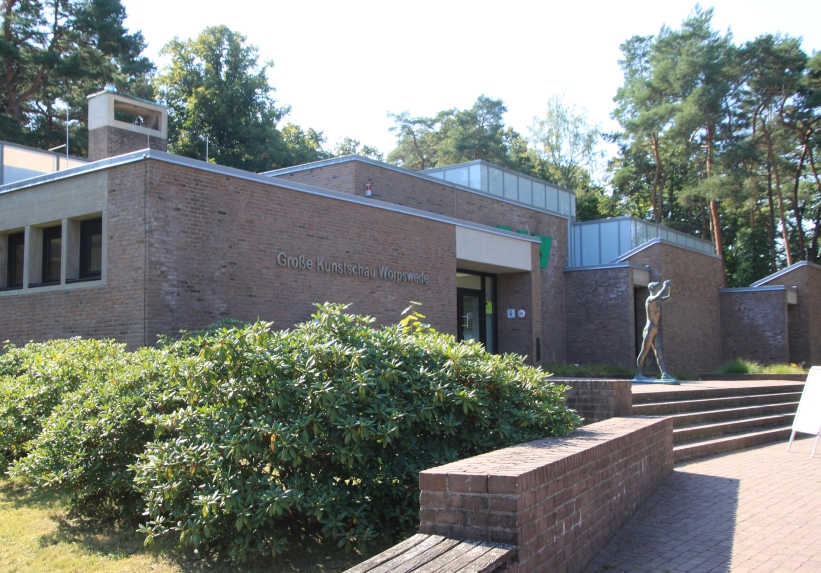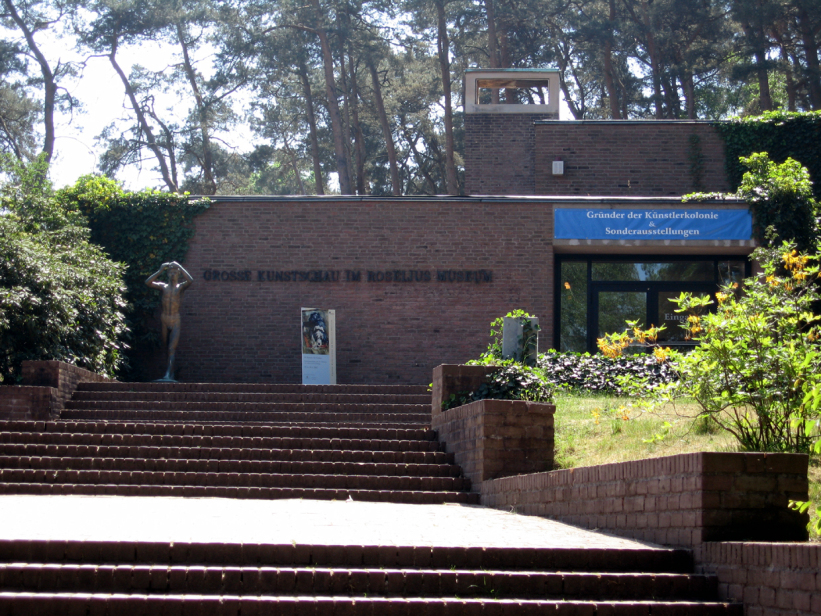Gerhard M├╝ller-Menckens: Ludwig Roselius Museum Worpswede, 1970–1971
- Worpswede, Germany, Show on map
- #CUL #Western Europe
-
The Ludwig Roselius Museum in Worpswede is a flat-roofed museum building that was erected as an extension to the neighboring Great Art Exhibition (Gro├¤e Kunstschau). The building was constructed in 1971 according to plans by architect Gerhard M├╝ller-Menckens to house the archaeological collection of Bremen coffee merchant Ludwig Roselius. As a modern extension, it complements the expressionist Hoetger ensemble from the 1920s at the side and is connected to the neighboring buildings via low intermediate wings.
The largely single-storey, brick-built structure is composed of several cubes of different heights and depths, creating a staggered roof landscape. The building encloses a central courtyard around which six exhibition rooms and a foyer are grouped. The fa├¦ade design with exposed brickwork creates a link to the existing buildings from the 1920s, but is complemented by numerous gray exposed concrete elements. These include, for example, window and door openings with exposed concrete lintels and frames.┬Ā
-
Heritage protected since 1983 (last updated on May 27, 2025).

